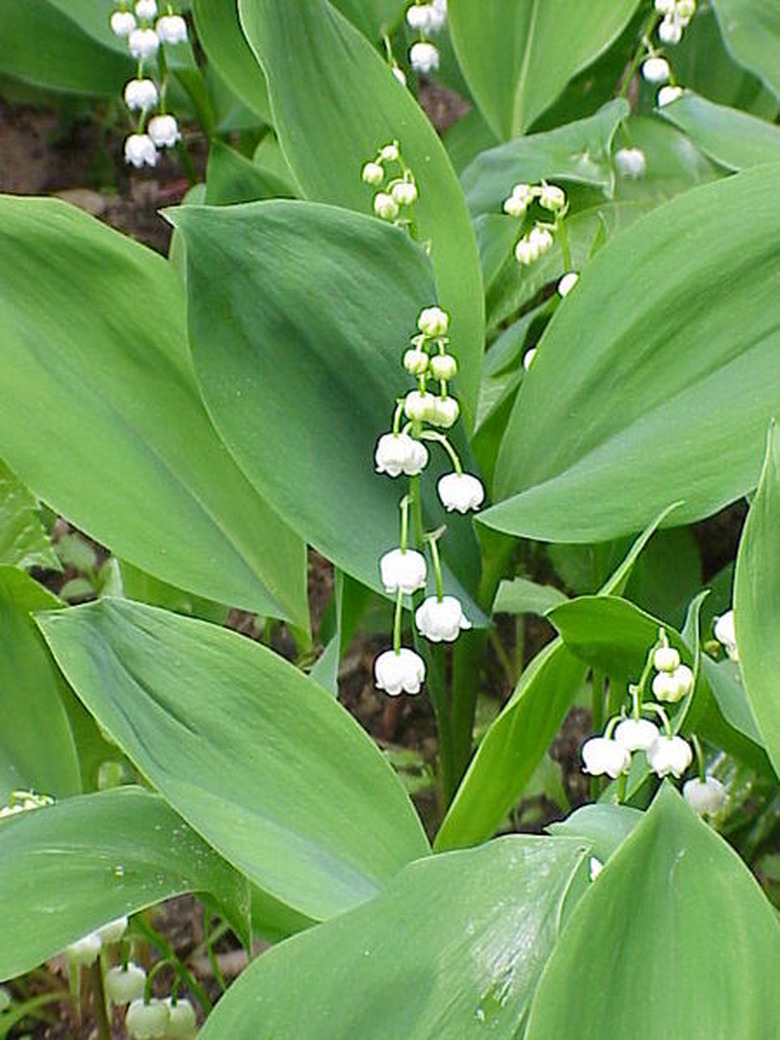How To Winterize Lily-Of-The-Valley
Things Needed
- Scissors
- Compost
- Well-aged manure
- Granular fertilizer
Warning
Despite the sylvan setting its name conjures up, all parts of the lily of the valley plant are toxic to humans and many mammals. Grazing animals should be kept away and these should not be planted on or near pasture land.
Lily of the valley, known botanically as Convallaria majalis, is a spring flowering ground cover plant that emanates from underground rhizomes called pips. Lily of the valley thrives in nutrient-rich moist soil in partial to full shade exposures. Full sun exposures are tolerable only in cooler northern climes. Hardy in USDA Zones 4a through 9b, lily of the valley is very low maintenance plant and can be prepared for winter and next spring's bloom with just a few minutes work in the fall garden.
Step 1
Prepare lily of the valley for winter beginning in October by cutting back any dead or diseased foliage that you may see. For small stands of plants, all of the top foliage can be cut back to the soil level to keep the garden looking tidy. Shearing the foliage off is not necessary as the leaves with either remain green or die back of their own accord, depending on your climate. For large or naturalized stands of lily, cutting back is impractical and you should just let the foliage remain to feed the soil.
- Lily of the valley, known botanically as Convallaria majalis, is a spring flowering ground cover plant that emanates from underground rhizomes called pips.
- For small stands of plants, all of the top foliage can be cut back to the soil level to keep the garden looking tidy.
Step 2
Mulch over the top of the lily of the valley plants with a 1-inch thick blanket of compost or well aged manure, or a combination of the two. Lily of the valley loves rich humus and the mulch in combination with the foliage will boost the nutrient value of the soil over the winter. A dose of bulb fertilizer or granular slow release fertilizer can be mixed into the compost and manure at the same time to provide an even richer soil for next season's plants.
Step 3
Dig, divide and relocate the lily of the valley pips in the fall if they have become overcrowded in their space or if you want to create a larger stand. Carefully excavate widely around the rhizome with a hand trowel until you can easily lift the rhizome from the soil. Break or cut the rhizome into pieces with one eye or pip per piece. Bury the individual pieces pip side up 1 to 2 inches deep and 4 to 6 inches apart. The pips will establish themselves over the winter and spring.
- Mulch over the top of the lily of the valley plants with a 1-inch thick blanket of compost or well aged manure, or a combination of the two.
- Dig, divide and relocate the lily of the valley pips in the fall if they have become overcrowded in their space or if you want to create a larger stand.
